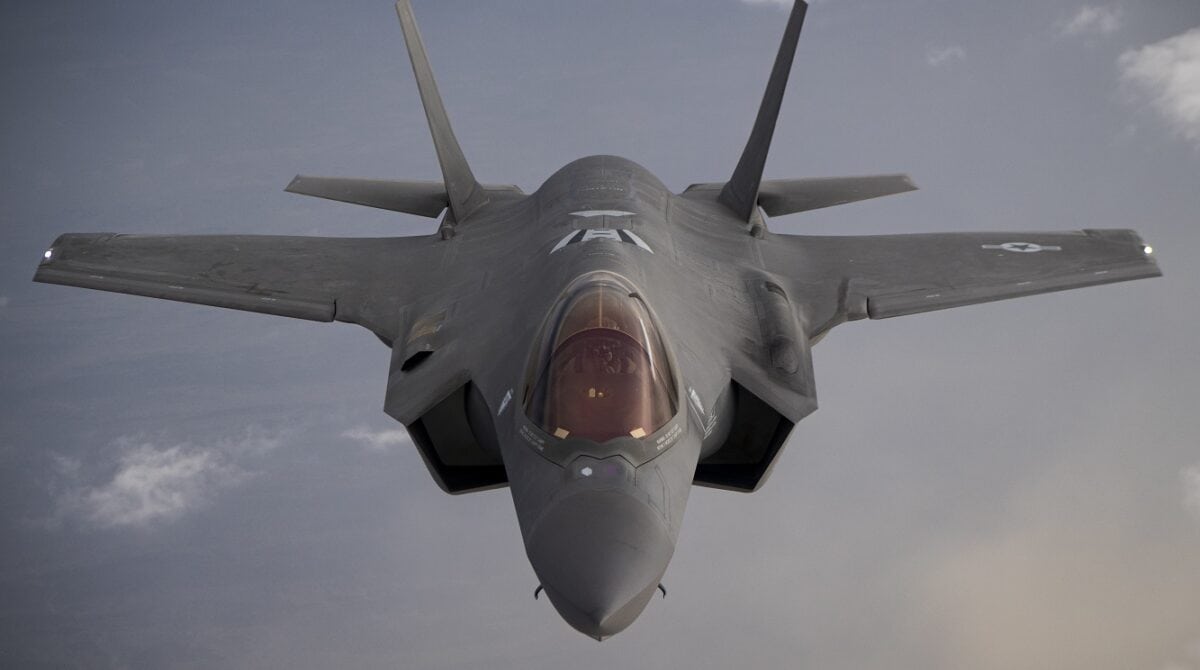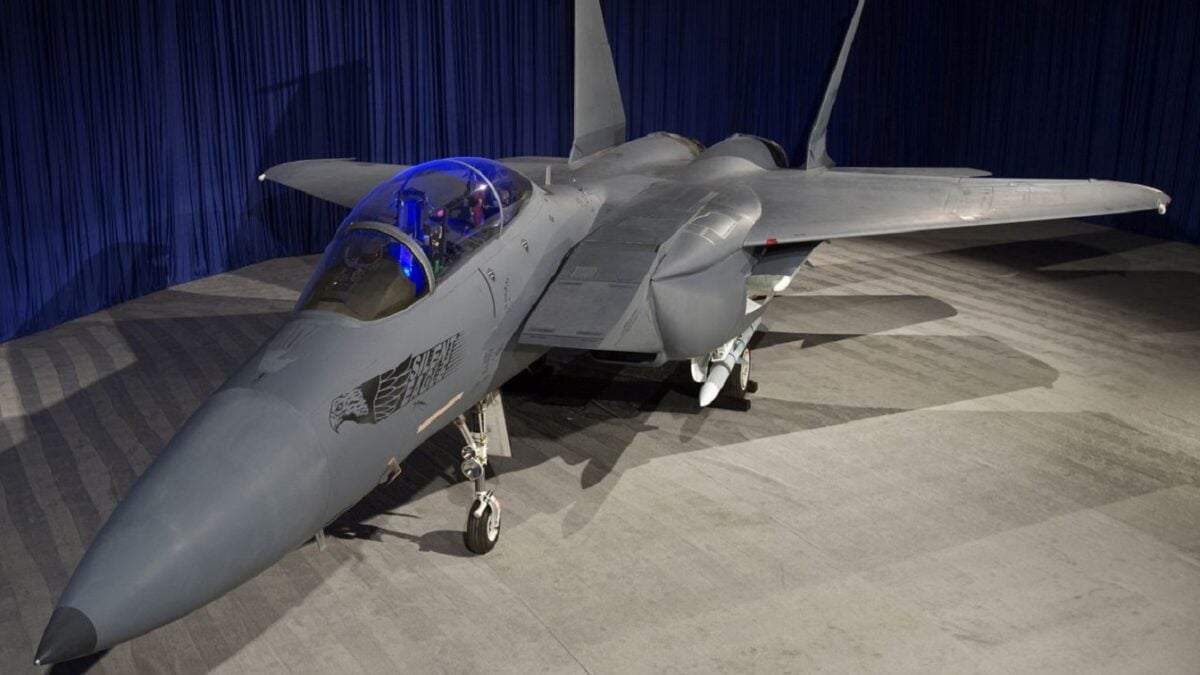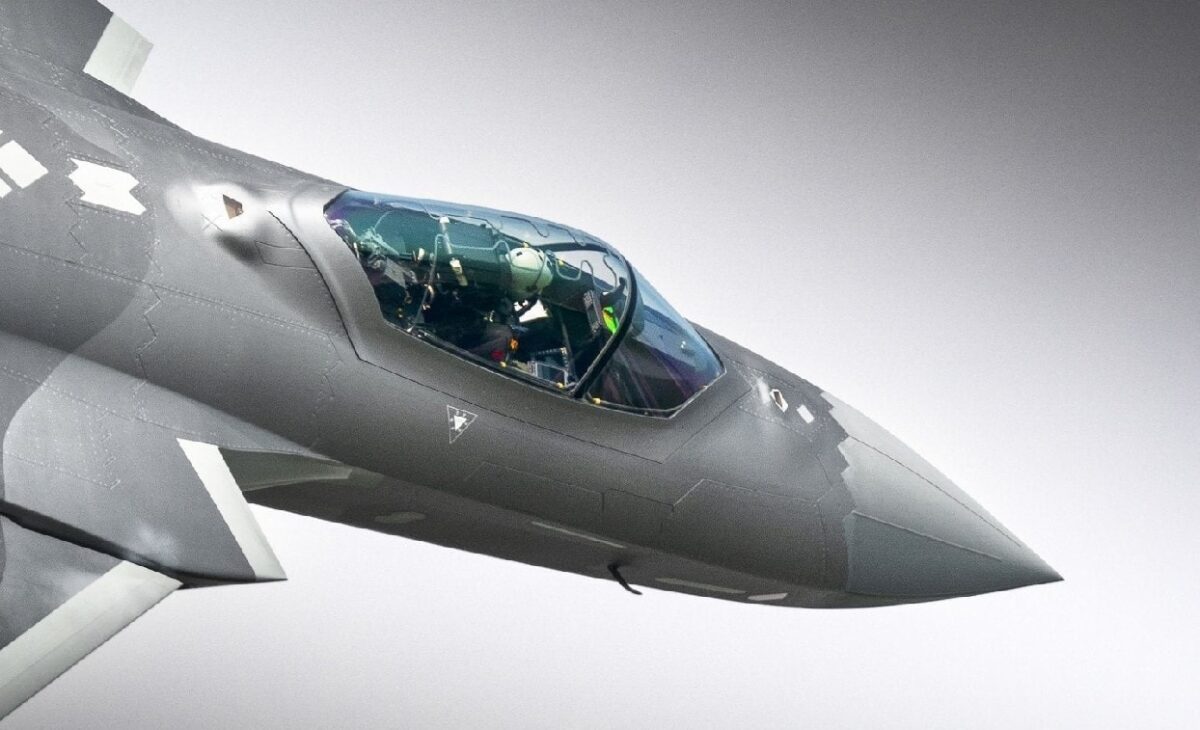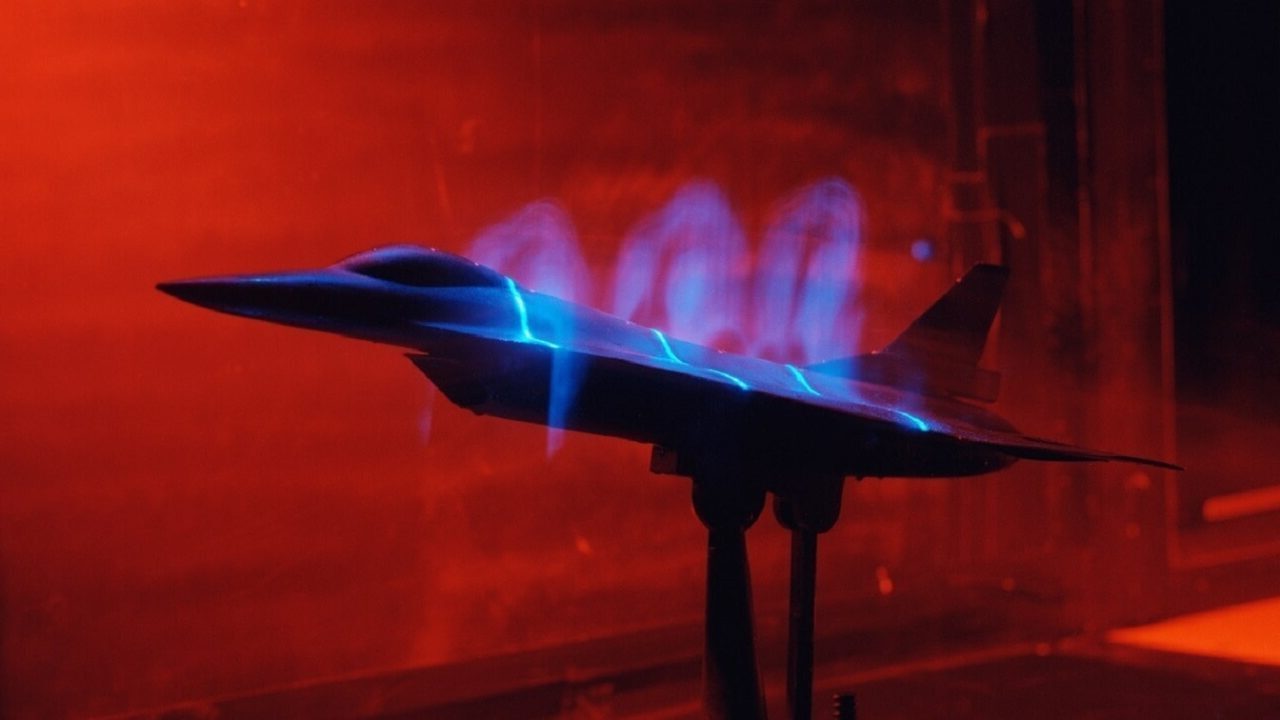Recently, we covered the story behind Boeing’s F-15SE Silent Eagle, a 4th generation fighter given a stealth injection to compete in the 21st century, and it got us wondering: just how stealthy can you really make the oldest fighters in Uncle Sam’s hangars?
The truth is honestly pretty surprising. While stealth designs are essential for building a fighter that is truly low-observable, most fighters that lack radar-deflecting design cues can still benefit quite a bit from a combination of radar-absorbent materials and a few slight modifications. Without massive changes to the aircraft’s design, you’ll never make an F-16 as stealthy as an F-35… but you make it a whole lot harder to shoot down.
“Stealth” is in the eye of the beholder
Stealth, for those who aren’t card-carrying aviation nerds, is an often misunderstood capability, in large part because it isn’t one capability at all. Stealth isn’t something you have or don’t have, nor is it something you can just slap on. The truth is, what we call stealth is really a combination of technologies, production methodologies, and combat tactics that all overlap to push an aircraft toward the lower end of what you might call an observability spectrum. The further you are on the “low observable” side, the stealthier your aircraft is, while decidedly non-stealth platforms like B-52s and Goodyear Blimps occupy the opposite and highly observable side of that spectrum.
With this in mind, it’s important to note that there is no universally recognized line on that observability spectrum between “real” stealth fighters and those which are just less observable than average. You can find lots of internet debates about the semantics of stealth caused by this single point of contention. Just like fighter generations, these terms are defined by their use, and their use is often manipulated through marketing, PR campaigns, and even popular sentiment.
In America, we don’t call anything a stealth fighter unless it’s incredibly difficult to spot on radar… but in Russia, stealth is less about capability and more about perception.
Russia’s premiere stealth fighter, the Su-57 Felon, for instance, is said to have a radar cross-section of between .1 and 1 square meters, and broadly considered around .5. Russia—and most of the world—call this a stealth fighter… despite having a comparable radar return to America’s non-stealth 4th generation F/A-18 Super Hornet when flying without external weapons.
So, in a very real way, being a “stealth fighter” is largely in the eye of the beholder, but no matter where you land on the observability spectrum, any stealth jet has to start at the design stage.
A 4th generation fighter won’t ever be as stealthy as a 5th generation one
If your goal is to build a stealth fighter, you’ve got to start with the arithmetic. Stealth jets like the F-35 Joint Strike Fighter and F-22 Raptor may look pretty sleek, but their designs still leverage the same basic principles developed for the highly angular F-117 Nighthawk. At the time, the Nighthawk’s hard angles, designed specifically to deflect radar waves away from the aircraft, represented the very best computers could come up with. Today, the math is the same, but the computers are far more powerful, allowing for the sleek (if not a bit puffy) aesthetic we see in the Joint Strike Fighter today.
To better understand how these angles have an appreciable effect on radar cross-section (how large an aircraft appears on radar), let’s look to Alan Brown, who was Lockheed’s first chief engineer for the F-117 Nighthawk. Here’s an incredible 1-minute video where he explains how small changes to angle can result in huge reductions in an aircraft’s radar return. If you aren’t able to watch the video, I’ll include the pertinent quote below.
“Very simply, if I’m looking at a flat surface at right angles to the radar, if something like this were one square meter it would have a radar return of a thousand square meters,” Brown explains holding up a square.
“If I move it back just about eight degrees, not very much, it drops from a thousand square meters to one square meter. And if I move it down to a very shallow angle, like about 20 degrees to horizontal, it’s now down to one ten millionth of what it was when it was up there.”
And therein lies the trouble with adding stealth to a 4th generation fighter: their designs were developed to achieve the best possible performance in the air, not to deflect radar waves. In fact, the F-15, basis for the Silent Eagle we mentioned above, is widely considered to be not only the best 4th generation fighter in America’s arsenal, but likely the best fighter in all of the 20th century, despite having a radar cross-section that’s just about comparable to the broadside of a barn at a whopping 25 square meters. You can work to reduce that, but you’ll never be able to make an F-15 comparable to an F-35 in terms of radar return.
In other words, no matter what you do to a jet designed in the ’70s, it’s never going to be a truly stealth fighter (by American standards)… but that doesn’t mean there wouldn’t be any benefit to dressing them up like one. In fact, that’s something the United States has already been doing for some time.
Teaching an old fighter stealth tricks
Radar cross sections are widely debated online and national militaries aren’t exactly in the habit of stepping in to clarify when it comes to their operational fighters. So, we should take everything about this conversation with an F-15-sized grain of salt. On that note, it’s important to remember that an aircraft’s radar cross-section (RCS) varies depending on the angle of the aircraft in relation to the radar array, but for the purposes of this conversation, we’re going to treat these numbers like static targets just to make the concepts manageable.
Starting in 2012, American F-16s tasked with Suppression of Enemy Air Defense (SEAD) missions—or Wild Weasels, as they’re often known—began receiving the 5th generation of radar absorbing “Have Glass” treatments. In effect, these F-16s received the radar-absorbent material (RAM) one might find painted on a 5th-generation fighter, and in fact, some of the paint is even applied using the very same CASPER (Computer-Aided Spray Paint Expelling Robot) the Air Force uses to apply radar-absorbent paint to the F-22.
RAM is used on modern stealth fighters to minimize the radar return created by the facets of their designs that couldn’t be adjusted to deflect radar waves—things like jet inlets, the fighter’s nose, and the leading edges of its wings.
“RAM works on the principle of the aircraft absorbing the electromagnetic wave energy to minimize the intensity of the reflected signal,” wrote Adrian Mouritz in the academic textbook “Introduction to Aerospace Materials.”
Delaying radar detection is of particular import for Wild Weasel F-16s, as these fighters are tasked with hunting for and engaging surface-to-air missile batteries in enemy airspace using anti-radiation (radar-hunting) missiles like America’s front: F-16C, F-15E, F-15C, F-35A, F-22, and A-10 (U.S. Air Force photo)
The first generation of Have Glass treatments were applied to the cockpit canopies of F-16s, not unlike applying a gold tint to sunglasses—and believe it or not—were estimated to reduce the F-16’s radar return by as much as 15%. Today, the (ironically named) 5th-generation treatment, which includes the use of RAM paint throughout much of the aircraft, has been estimated to drop the F-16’s radar return by a whopping 76%. In other words, the use of RAM was able to shrink the Viper on radar screens from 5 square meters to a comparably tiny 1.2.
Of course, the F-16 started out with a much smaller radar cross-section than the F-15—at 5 m² and 25 m² respectively—but if we were to apply this same arithmetic to the F-15, we’re now talking about an Eagle with a radar cross-section of just 6 m². Of course, this is a gross generalization, but with modern RAM rated to absorb 70-80% of inbound electromagnetic energy, there’s no denying that RAM could offer just about any 4th generation fighter a huge boost in stealth, or rather, a big push toward the low observable side of the spectrum.
Boeing’s Block III upgrade to the Navy’s F/A-18 Super Hornets also includes adding more RAM for a reduction in the fighter’s radar return. The Block II Super Hornet already included radar-absorbent paint, which experts contend likely brought the fighter’s radar return down to around .5 square meters (similar to the Su-57) and recent Navy comments suggest they expect to cut that down by a further 10% with the Block III iteration.
Again, it’s important to remember that this level of reduction still doesn’t come anywhere near matching the stealth offered by platforms like the F-22 or F-35, which boast estimated radar cross-sections of 0.0001-0.0002m² (the size of a marble) to 0.0015m² (the size of a golf ball) respectively. But this reduction does delay detection of these aircraft as they approach, giving them time to find and engage their targets first before being engaged themselves. And the smaller an aircraft’s radar profile, the more it can benefit from friendly electronic warfare in the area interfering with enemy radar systems.
Why don’t we just cover every fighter in stealth paint?
So, if we can cut the radar return of a fighter, stealth or not, by such a huge percentage using what is effectively a topical treatment, why not spray this stuff all over (and inside) every non-stealth fighter in America’s arsenal? Well, the short answer is cost, and the long answer is lots more cost with a side order of complications... at least, for now.
The F-35 Joint Strike Fighter and F-22 Raptor are both widely touted as among the stealthiest tactical aircraft ever to fly, but they’re also both often chided for their immense operational costs. That isn’t a coincidence. Radar-absorbent paint and other materials break down during normal aircraft operations and break down even faster under aggressive flying. Radar-absorbent paint is often seen cracking on the fuselages of F-22 Raptors, and the F-35B and C, short-take off and carrier iterations of the fighter, actually had their performance limited not by the airframe’s capabilities, but by the weakness of their radar-absorbent paint that begins to fail at supersonic speeds. These stealth fighters effectively begin bleeding off elements of their stealth after flying at supersonic speeds for anything longer than less-than-a-minute bursts.

A U.S. Air Force F-35 Lightning II flies over the U.S. Central Command area of responsibility, July 15, 2020. The F-35 Lightning II is an agile, versatile, high-performance, multirole fighter that combines stealth, sensor fusion and unprecedented situational awareness. (U.S. Air Force photo by Airman 1st Class Duncan C. Bevan)
While operating costs vary by year and outlet reporting them, the F-22 may be America’s most expensive fighter ever in terms of day-to-day operations, with some estimates reaching as high as $70,000 per hour for a single aircraft. The F-22 needs a thorough maintenance overhaul, particularly of its radar-absorbent paint and materials, just about every 300 flight hours, and as a result, the Air Force spent $22 million on each F-22 in 2018 on maintenance alone. The F-35, while significantly cheaper thanks in part to volume, rings it at around $44,000 per hour, or about $13.28 million per aircraft per year, for maintenance. Of course, it also goes without saying that while these aircraft are receiving their RAM maintenance, they’re out of operational rotation. Some of these treatments take days or even weeks to apply and cure before they can be rotated back up to the flight line.
When you compare those costs to other 2018 maintenance figures, like the F-16’s $5.65 million per fighter, the F/A-18 Super Hornet’s $9.23 million, or even the F-15E Strike Eagle’s $11.71 million per fighter, the added cost of stealth becomes palpable. In other words, adding stealth radar-absorbing paint to a fighter can indeed reduce its radar return, but it will also lead to a sharp uptick in maintenance requirements and costs, all at the price of high-end performance.
Of course, if the United States were embroiled in a fight with a high-end competitor, it might even be worth throwing all of that money toward RAM treatments that could make 4th generation fighters a bit more stealth, but that’s not the situation America finds itself in. Instead, most of the combat operations American forces have participated in for decades now have taken place under uncontested airspace—making stealth an unnecessary expense for the vast majority of operations.
In other words, adding stealth might make these fighters a bit harder to detect, but without any air defenses to detect them, adding stealth paint you need to keep maintaining is a waste of money.

A somewhat stealth F-15 Silent Eagle. Image Credit: Creative Commons.
Will the future force fly anything but stealth fighters?
The future of stealth is predicated on two things: the cost of making stealth aircraft, and the efficacy of stealth against enemy air defense systems. Stealth, of course, isn’t a single technology, and as such, can evolve to encompass new threats posed by improved detection and targeting mechanisms. The same way stealth now encompasses things ranging from heat dissipation to production tolerances on the airframe, stealth tomorrow will almost certainly include provisions for the day’s latest detection methodologies and likely offensive electronic systems. Stealth isn’t going anywhere, because it’s in its very nature to evolve with the times.
But just because stealth isn’t going anywhere doesn’t necessarily mean that it will be everywhere. Just like today, stealth platforms of the future will have to adopt the latest and most expensive technologies, meaning there will always be legacy aircraft lagging a bit behind the latest stealth curve. But what about stealth as we know it today? Will that eventually become ubiquitous?
The answer to that is a resounding…. maybe. In seems entirely likely that aircraft developed from here forward will all incorporate some stealth design elements meant to limit or delay their detection. Today’s RAM is expensive and difficult to maintain, but efforts are underway to field ceramic-based radar-absorbing materials that might prove not only more effective, but far more resilient, allowing for RAM applications that last longer, cost less to maintain, allow for better performance, and thus, can be effectively deployed force-wide.
Likewise, offensive electronic warfare (EW) capabilities aimed at spoofing radar returns, jamming communications, and interfering with air defense systems will also continue to become more and more commonplace until EW is as standard in tactical aircraft as ejection seats or flares. While this doesn’t work the same way as radar-defeating stealth, the resulting delay in detection or targetting is the same.

Chinese J-20 Stealth Fighter. Image Credit: Chinese Internet.
You might say that yes, stealth will almost certainly worm its way into just about every facet of military aviation in parallel with attempts to neuter its benefit until everything is stealth to radar and IR to some extent and we’re stuck trying to offset a new kind of detection and targeting apparatus. When that day comes, we’ll face the same challenge we do now: a fleet of aircraft designed to fight in a technological world that no longer exists, and the looming financial burden of chasing new capabilities that can offset new defenses.
Because stealth can and does change with the times, but war? Well, if you’re a fan of the Fallout franchise you already know: war never changes.
Alex Hollings is a writer, dad, and Marine veteran who specializes in foreign policy and defense technology analysis. He holds a master’s degree in Communications from Southern New Hampshire University, as well as a bachelor’s degree in Corporate and Organizational Communications from Framingham State University. This first appeared in Sandboxx News.

